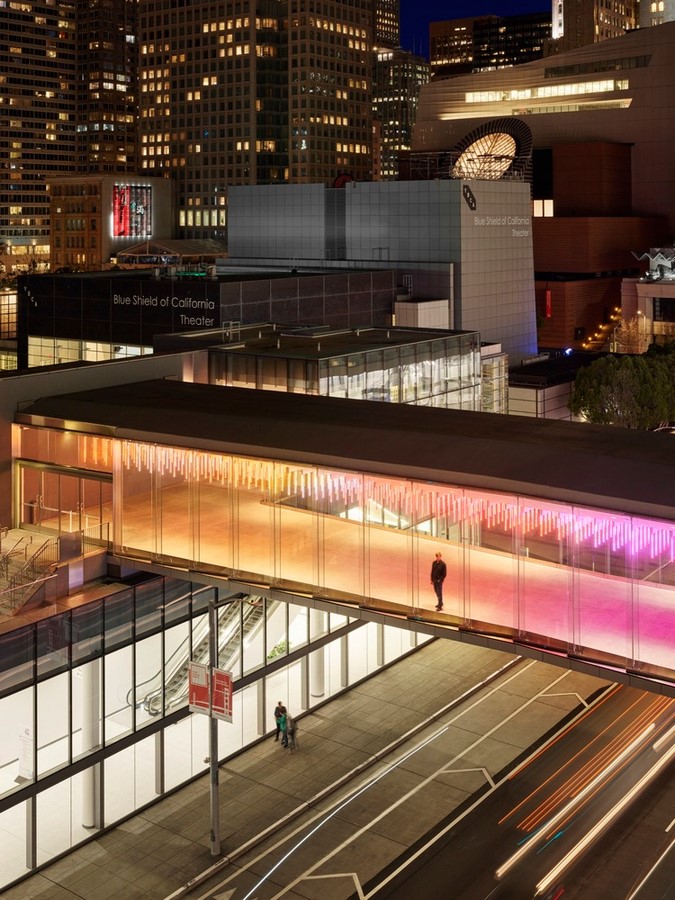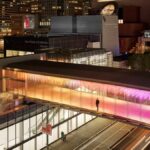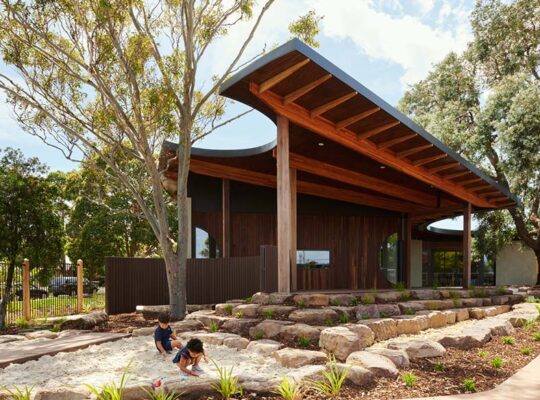Introduction
The Moscone Center Expansion, a collaboration between Skidmore, Owings & Merrill and Mark Cavagnero Associates, reimagines convention spaces by seamlessly integrating light-filled environments with the vibrant urban fabric of San Francisco. This transformative project, constructed in phases while the existing structures remained operational, epitomizes innovation and sustainability.

Urban Integration and Context
Nestled in San Francisco’s South of Market neighborhood, the Moscone Center spans nearly 20 acres, strategically positioned between Yerba Buena Gardens and the Children’s Garden. Embracing its civic role, the expansion fosters connections between convention activities and the public realm, enhancing the city’s cultural landscape.

Architectural Expression
A striking horizontal form, framed in white metal and adorned with transparent and fritted glazing, defines the Center’s new civic presence. These meticulously crafted facades infuse internal circulation spaces with filtered light, fostering a dynamic interplay between the interior and exterior environments.

Enhanced Public Interface
Ground-level transformations, including the creation of a Visitor’s Center and retail spaces, promote pedestrian engagement by maximizing transparency and permeability. A soaring 75-foot-tall atrium and luminous sculptural roof further enhance the Center’s accessibility and visual appeal, offering panoramic views of the skyline.

Sustainability and Efficiency
Distinguished as one of the most sustainable convention centers in the U.S., the Moscone Center Expansion boasts a LEED Platinum certification and the lowest carbon footprint per visitor globally. Its eco-friendly features include a vast rooftop solar panel array, groundwater, and greywater systems, exemplifying a commitment to environmental stewardship and resource efficiency.

Conclusion: A Model for Sustainable Urban Development
The Moscone Center Expansion stands as a testament to the transformative power of architectural innovation and sustainability. By seamlessly integrating with its urban context and prioritizing environmental responsibility, it not only redefines convention spaces but also sets a precedent for sustainable urban development, reaffirming San Francisco’s position as a global leader in progressive design and environmental stewardship.
























